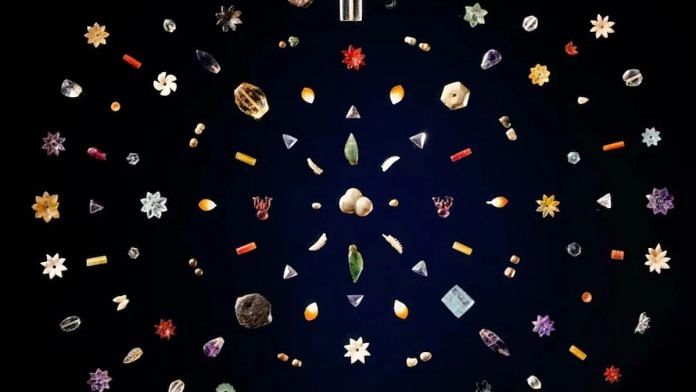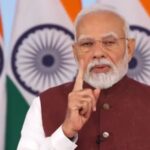The case is further complicated by Chris Peppe, the of the Piprahwa relics, who despite acknowledging his custodianship, claimed ownership and sought to monetise the holy relics.
Not only does this episode highlight several critical legal and ethical concerns but also underlines the broader issue of colonial loot and the absence of robust legal frameworks, which has empowered ‘custodians’ to authorise sales and the auction houses to proceed even when the sacred relics are associated with a religious figure such as Buddha.
The archaeological remains at Piprahwa are located 9km north of Birdpur in Siddharthanagar district of Uttar Pradesh, roughly 1.5 km south of the Indo-Nepal border. The region was part of the Birdpur estate, a principal estate that comprised more than 250 villages during the colonial era. It was given to multiple companies for its development and upkeep but all of the ventures failed miserably. Until 1848, when William C Peppé, a who was managing multiple estates for the government, became the estate manager to oversee significant developments such as the irritation.
During his stay he was fascinated with piles of archaeological remains and began digging the Piprahwa stupa. This excavation was driven more by the prospects of finding treasure than by archaeological intent. About 10 feet below the surface, he unearthed a soapstone inscribed relic casket with sacred remains of Gautama Buddha and other offerings. Further digging, at 18 feet below the surface, revealed a massive sandstone coffer containing five vases including a crystal and silver vase along with other offerings of precious and semi-precious stones, pearls, bones and ashes.
The coffer and the casket are housed at the Indian Museum. It was from this coffer William Peppé kept a few ‘duplicates’ with him. The recovered bone relics were presented to King Rama V of Thailand. These bone relics were further divided into three shares between Thailand, Myanmar, and Sri Lanka. The rest of the relic remains were handed over by Peppe as a token of gratitude to Sri Lankan monk Sri Subhuthi Mahanayake Thero. He assisted in the excavation. This portion is kept at Waskaduwa Viharaya, a Buddhist temple in Sri Lanka’s Kalutara.
After the Archaeological Survey of India took the ownership of the site, it was excavated by archaeologist KM Srivastava and his team from 1971 to 1977. Digging deeper than Peppé’s level, they discovered two additional steatite relic caskets containing a total of 22 sacred bone relics. Twenty bone fragments are kept at the National Museum, New Delhi while the remaining two are at Indian Museum, Kolkata.
In early February, Chris Peppe wrote for recounting the story of nostalgia and rediscovery attested to the Piprahwa relics. He described the tradition of passing down these relics as family heirlooms, starting from William Peppé to his son and finally to Chris Peppe and his cousins in 2013.
He also claimed that the gem relics were ‘duplicate’, allowing William Peppé to retain them while the rest were distributed. He argued that their very declaration as duplicate made these relics inconsequential enabling the sale. However, the definition of the term ‘duplicate’ remains ambiguous. A formal and legal authentication is also absent in this case.
In the befitting reply, the Ministry of Culture outlined four key objections. The first focused on provenance and ownership, casting doubt on the term duplicate. It is also not clear if these are replicas or simply multiples of similar gems?
The second objection was addressed to the term ‘custodianship’. As per GOI, custodianship does not grant any legal right to alienate or misappropriate the asset of extraordinary heritage of humanity. India pointed out that even if the colonial government of that time gave custodianship to William Peppé, his descendants had no legal grounds to sell the relics. Therefore, the right of first refusal for resumption of custodianship goes to India, Moreover, the relics, reportedly stored in a shoe box, were improperly maintained, further undermining the custodian’s credibility.
The notice also refers to relevant laws and conventions such as the Indian Treasure Trove Act of 1878, applicable to the gem relics. It affirms that the ownership of the discovered relics lies with the colonial government, not William Peppé.
Moreover, the UNESCO Convention of 1970 designates relics as cultural property. The gems thus require joint authorisation from India and China for any auction. In addition, the Hague Convention (1954) and Second Protocol (1999) emphasise the sacred and non-commercial status of cultural property of religious significance, categorising the Piprahwa relics under ‘enhanced protection’.
Lastly, the ministry cited precedents involving restitution of Buddhist relics, such as the return of the Sanchi Stupa relics excavated by Alexander Cunningham, which was sent back fromto India in 1952.
Although Chris Peppe continues to claim that , the grounds of these claims are not clear. This case exemplifies the persistence of colonial mindset in claiming ownership of cultural property removed from the colonies.
This brings up the need for establishing global frameworks specifically addressing colonial-era artefacts. Independent institutions/organisations should be established to mediate restitution cases and resolve ownership disputes. Additionally, India must take stock of all the antiquities in possession of private collectors, university departments and museums both domestically and abroad. Thousands of antiquities of Indian origin are housed in famous museums across the globe. India should go through diplomatic channels and document them, identify date and provenance and maintain a record diligently. Similarly at home, there is a need to maintain a record and keep an eye on antiquities, especially those in private collections.
According to the Indian Treasure Trove Act of 1878, the Indian government, not William Peppé, legally owns the relics. On what grounds can an estate manager take sacred relics and pass it down to his heirs, all while miraculously claiming what can be understood as ownership. Having said that, lapses have been made from our end as well. Post Independence India established its own legal framework for protecting antiquities. At the same time through diplomacy we have been successful in getting many stolen, smuggled and removed objects. In this case when Chris Peppe was moving these relics from New York to Hong Kong for exhibition, why didn’t our government take stock of the matter? Given the legal framework and diplomacy why didn’t we reach out to the Peppe family, if not restitution, at least for basic documentation. For over a century it never occurred to us to get these relics back when the casket and coffers were in India. Is it lethargy or devil may care attitude?
It is also important to note that in the absence of protective infrastructure, many artefacts are relatively safer in museums abroad, but when it’s the case of private collections, India will have to take up a ginormous task to maintain an inventory.
In the end whether India will be able to get these relics back or not, time will only tell, but the restitution of objects taken by colonial officers assuming the right of ownership, is incorrect and intolerable.
(Edited by Theres Sudeep)








